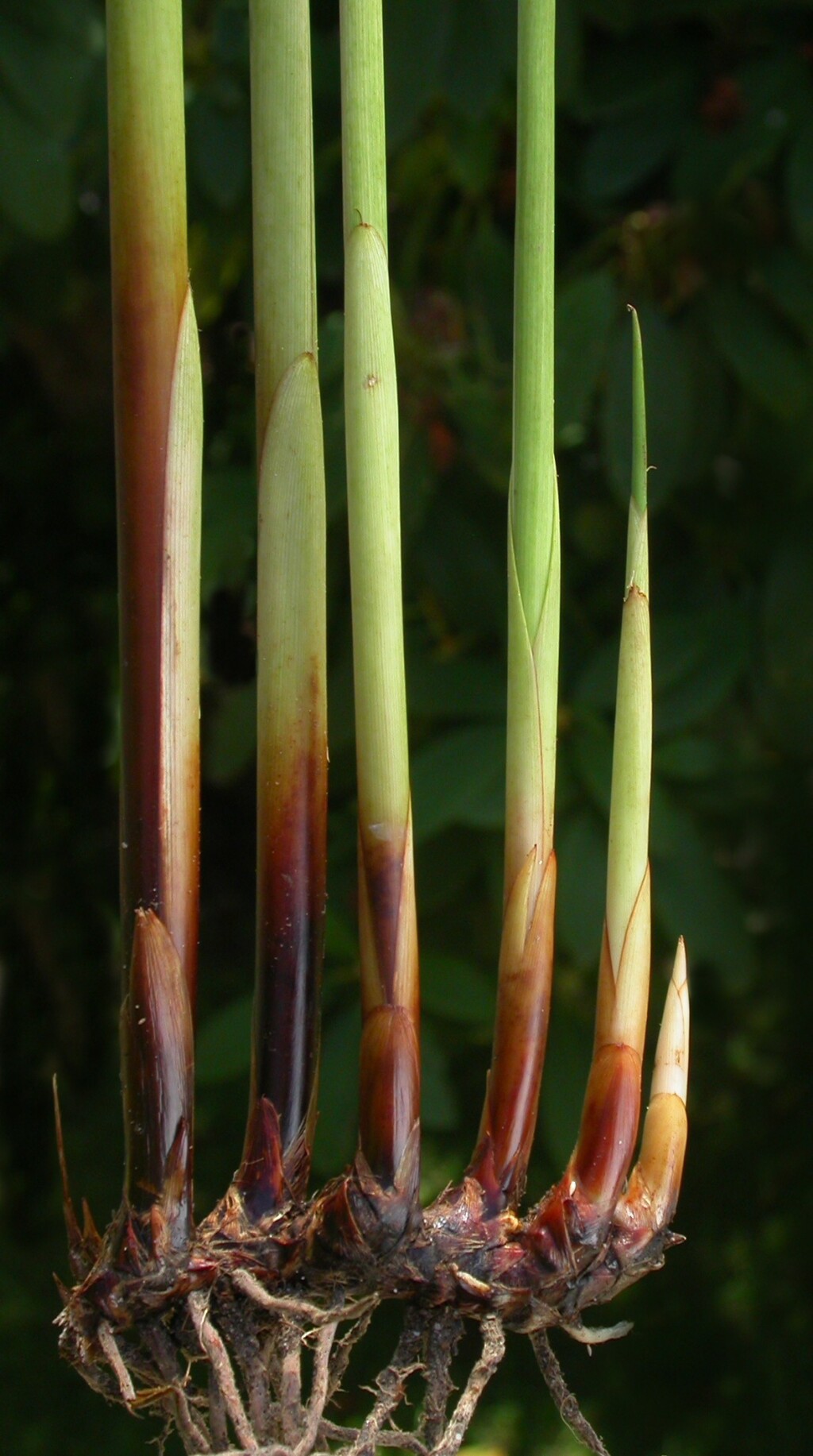Juncus pallidus
R.Br.Tufted robust perennial with horizontal or ascending rhizomes. Cataphylls broad, obtuse, loose or tight, pale to dark brown towards the base, to c. 40 cm long. Culms erect, sometimes faintly glaucous when immature, usually bluish-green to dull green at maturity, 50–220 cm high and (2.5–)3.0–8.0 mm diam.; striations 50–100, not strongly raised to moderately strongly raised; pith moderately dense, continuous; stomates superficial. Inflorescence with flowers typically scattered or occasionally clustered (but not forming distinct subglobular clusters); primary bract continuous with culm, to c. 35 cm long; prophylls present. Tepals stramineous or midrib occasionally reddish tinged, 2.6–3.5 mm long; stamens 6, anthers 0.5–0.9 mm long. Capsules golden-brown, longer than or equal to the tepals, 2.8–3.5 mm long. Pale Rush Flowers mostly Oct.–Jan., seeds shed mostly Dec.–Apr.
LoM, MuM, Wim, GleP, Brid, VVP, VRiv, MuF, GipP, OtP, WaP, Gold, CVU, GGr, DunT, NIS, EGL, EGU, WPro, HSF, HNF, OtR, Strz, MonT, HFE, VAlp. Also WA, SA, NSW, Tas. New Zealand. A common species on and south of the Great Dividing Range with a few dispersed records to the north. Occurs in a range of habitats, but most commonly collected near-coast.
A distinctive species, but sometimes confused with Juncus semisolidus, J. continuus and J. procerus. Hybrids with J. pauciflorus, J. sarophorus, J. subsecundus, J. amabilis and J. flavidus are known.
Albrecht, D.E. (1994). Juncus. In: Walsh, N.G.; Entwisle, T.J., Flora of Victoria Vol. 2, Ferns and Allied Plants, Conifers and Monocotyledons, pp. 197–233. Inkata Press, Melbourne.
 Spinning
Spinning



